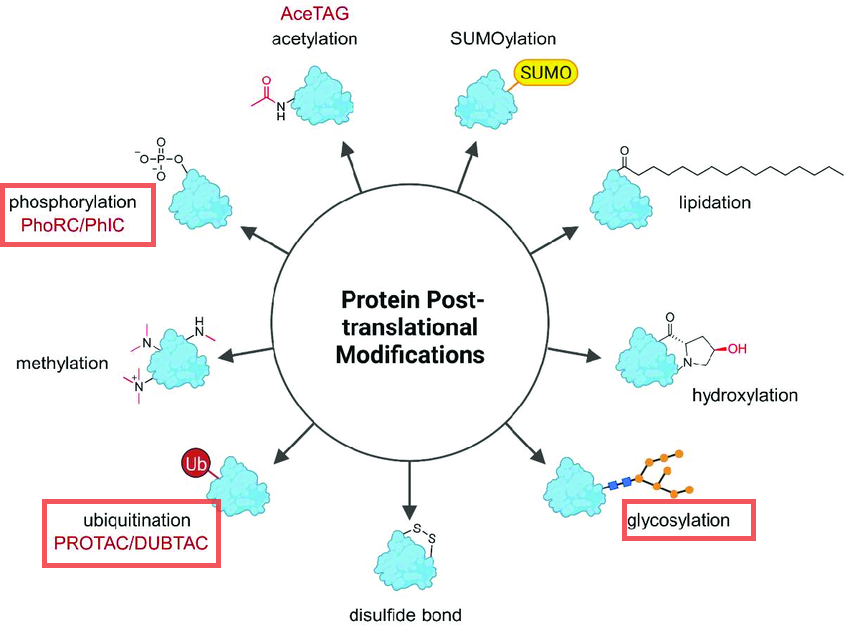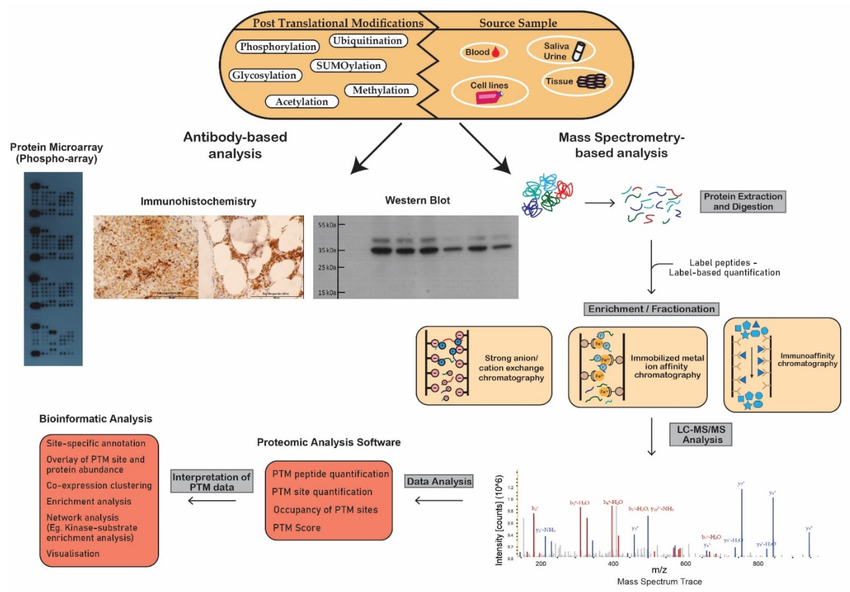Introduction
Indoleamine 2,3-dioxygenase (IDO) plays a key role in the immune system by initiating the breakdown of tryptophan into kynurenine, a process critical in various diseases, including cancer and autoimmune disorders. Understanding the post-translational modifications (PTMs) of IDO is essential for comprehending its regulatory mechanisms and potential as a therapeutic target. This blog post examines the PTMs of IDO, focusing on the methodologies of Western blotting and mass spectrometry (MS) for their analysis.
The Importance of Post-Translational Modifications in IDO Function
PTMs such as phosphorylation, ubiquitination, and glycosylation regulate protein function, stability, localization, and interactions. In IDO, these modifications affect its enzymatic activity and interaction with cellular pathways, influencing immune responses.
Key PTMs of IDO
- Phosphorylation: This modification, mediated by kinases, can activate or inhibit IDO activity by adding phosphate groups to specific residues.
- Ubiquitination: This process tags proteins with ubiquitin molecules, often marking them for degradation via the proteasome, but it can also affect non-degradative functions.
- Glycosylation: Adding sugar moieties to proteins can influence their folding, stability, and interactions.
Western Blotting: A Tool for Detecting PTMs
Western blotting is a common technique used to detect and characterize specific proteins and their post-translational modifications (PTMs). The process involves separating proteins by gel electrophoresis, transferring them to a membrane, and probing with specific antibodies. For researchers seeking high-quality reagents and equipment for Western blotting, Gentaur, a leading supplier, offers a comprehensive range of antibodies, membranes, electrophoresis systems, and detection kits. Their products ensure reliable and reproducible results, supporting scientists in achieving precise and accurate protein analysis.
Advantages and Applications
- Specificity: Antibodies can be designed to detect specific PTMs, such as those that recognize phosphorylated residues.
- Quantification: Densitometric analysis allows for the relative quantification of protein and PTM levels.
- Validation: Western blotting can confirm PTMs identified by other techniques.
Limitations
- Antibody Dependence: The success of Western blotting relies on the availability and specificity of antibodies.
- Sensitivity: Detection may be limited for low-abundance proteins or subtle modifications.
Mass Spectrometry: A Comprehensive Approach to PTM Analysis
Mass spectrometry is a highly sensitive and specific technique for identifying and quantifying PTMs.
Workflow of MS-Based PTM Analysis
- Protein Extraction and Digestion: Proteins are extracted and digested into peptides, usually with trypsin.
- Peptide Enrichment: Techniques like immunoprecipitation or affinity chromatography enrich PTM-containing peptides.
- MS Analysis: Peptides are ionized and analyzed by tandem MS (MS/MS), where precursor ions are fragmented to identify PTM sites.
- Data Analysis: Bioinformatics tools interpret MS data and map PTMs onto protein sequences.
Advantages and Applications
- Comprehensive Coverage: MS can identify a wide range of PTMs simultaneously.
- Quantitative Analysis: Label-free quantitation or isotopic labeling methods (e.g., SILAC) enable precise quantification of PTMs.
- Novel PTM Discovery: MS can discover previously unknown PTMs and their regulation.
Limitations
- Complexity: MS data analysis requires advanced software and expertise.
- Sample Preparation: Rigorous preparation is crucial to avoid artifacts and ensure reproducibility.
Case Study: Dissecting IDO PTMs
Recent studies using Western blotting and MS have provided insights into IDO PTMs. Phosphorylation at specific serine/threonine residues has been shown to modulate IDO activity in response to inflammatory stimuli. Ubiquitination patterns of IDO are linked to its degradation and immune-regulatory functions.
Conclusion
Analyzing the PTMs of IDO is essential for understanding its regulatory mechanisms and potential therapeutic applications. Western blotting and mass spectrometry offer complementary techniques for PTM analysis. Advances in these methodologies continue to reveal the complexities of IDO regulation and its role in health and disease.

